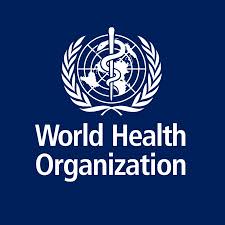Welcome To Glint News.........

Global Health Challenge: Extreme Heat Takes Toll on Workers Worldwide
A groundbreaking joint report by the World Health Organization (WHO) and the World Meteorological Organization (WMO) has shed light on the growing global health challenges posed by extreme heat on workers. As climate change drives more frequent and intense heatwaves, millions of workers who are regularly exposed to dangerous heat conditions are already feeling the health impacts of rising temperatures.
The report, entitled "Climate change and workplace heat stress," draws on five decades of research and evidence, highlighting that the health and productivity of workers are severely impacted by rising temperatures. According to the WMO, 2024 was the hottest year on record, with daytime temperatures of more than 40°C and even above 50°C becoming increasingly common. This is a clear indication that immediate action is needed to address the worsening impact of heat stress on workers worldwide.
The frequency and intensity of extreme heat events have risen sharply, increasing risks for both outdoor and indoor workers. Worker productivity drops by 2–3% for every degree above 20°C. Health risks include heatstroke, dehydration, kidney dysfunction, and neurological disorders, all of which hinder long-term health and economic security. Approximately half the global population suffers adverse consequences of high temperatures.
Vulnerable populations, including children, older adults, and low-income populations in developing countries, are often more susceptible to the effects of heat stress due to limited access to resources, inadequate infrastructure, and pre-existing health conditions. Middle-aged and older workers, individuals with chronic health conditions, and those with lower physical fitness are also more susceptible to the effects of heat stress.
To tackle these challenges, the report calls for the implementation of tailored occupational heat action plans, developed in collaboration with employers, workers, unions, and public health experts. These plans should include measures such as developing occupational heat-health policies with tailored plans and advisories that consider local weather patterns, specific jobs, and worker vulnerabilities.
Education and awareness-raising for first responders, health professionals, employers, and workers to recognize and properly treat heat stress symptoms, which are often misdiagnosed, is also crucial. Engaging all stakeholders from workers and trade unions to health experts and local authorities in the co-creation of heat-health strategies that are locally relevant and widely supported is essential.
The report serves as a critical resource for policymakers, public health officials, and employers in mitigating the escalating impact of workplace heat stress. It aligns with key United Nations Sustainable Development Goals, calling for decisive actions that protect vulnerable workers, reduce poverty, and promote sustainable economic growth. Immediate implementation of policies and programmes that safeguard worker health and productivity in the face of climate change is essential.
"Heat stress is already harming the health and livelihoods of billions of workers, especially in the most vulnerable communities," said Dr. Jeremy Farrar, WHO Assistant Director-General, Health Promotion, Disease Prevention and Care. "This new guidance offers practical, evidence-based solutions to protect lives, reduce inequality, and build more resilient workforces in a warming world."
"Occupational heat stress has become a global societal challenge, which is no longer confined to countries located close to the equator – as highlighted by the recent heatwave in Europe," said WMO Deputy Secretary-General Ko Barrett. "Protection of workers from extreme heat is not just a health imperative but an economic necessity."
The joint report by WHO and WMO complements the findings of the recent International Labour Organization (ILO) reports, which highlight that more than 2.4 billion workers are exposed to excessive heat globally, resulting in more than 22.85 million occupational injuries each year. The ILO's Chief of Occupational Safety and Health and the Working Environment, Joaquim Pintado Nunes, emphasized the need for urgent, coordinated action to safeguard the health, safety, and dignity of workers exposed to excessive heat.
The report and technical guidance offer robust, evidence-based guidance to help governments, employers, and workers confront the escalating risks of climate change and protect the health, safety, and dignity of workers worldwide. As the world continues to grapple with the challenges of climate change, it is clear that protecting workers from extreme heat is a critical component of building a more resilient and sustainable future.